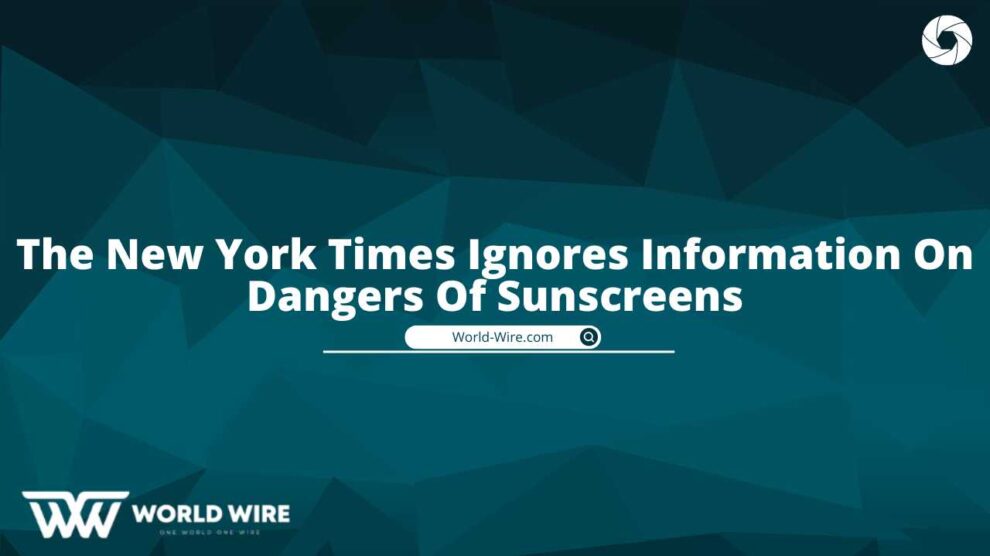The New York Times’ regular columnist Jane Brody wrote an article titled “Saving Young Skin From the Sun’s Perils” on June 19. In particular for kids, Brody said that sunscreen “is a necessary for everyone starting at age six months… and should be reapplied every two hours.” Brody is ignorant of the risks associated with sunscreen, though.
In order to lower the likelihood of sunburn from exposure to short wave ultraviolet (UVB) solar radiation, six chemicals are frequently included in sunscreens, at concentrations of up to 10%. However, it should be underlined that these components are unable to filter out the more harmful long wave (UVA) radiation.
Recent research have raised considerable concerns about the risks associated with sunscreens. Contrary to assurances regarding safety, the majority of persons with light skin use sunscreen to guard against sunburn caused by UVB radiation. This is despite label claims for a high Skin Protection Factor (SPF).
However, this frequent technique causes significant levels of cumulative exposure to the more hazardous UVA radiation, especially in children. This causes the conventional indications of skin ageing, such as wrinkling and discoloration, by penetrating the deep layers of the skin without giving any warning of sunburn and breaking down the protein and collagen that maintain the skin tight and plump.
In a more serious vein, UVA radiation is widely acknowledged as the primary contributor of malignant melanoma. The incidence of this disease has recently surged substantially in the United States by around 130%, and its mortality has climbed by roughly 25%. It is currently the cancer with the quickest rate of growth in the entire world.
The impact of sunscreens on hormones is another issue. Their constituents are endocrine disruptors, a class of compounds that harm hormones. These cause infant rats’ uteri to develop after being painted with concentrations akin to those seen in sunscreens. Additionally, there is strong evidence that sunscreen chemicals build up in the body, as shown by the finding of these components in breast milk.
The usage of traditional zinc oxide and/or titanium dioxide sunblocks can easily prevent these risks associated with sunscreens. These offer excellent protection from harmful UVA rays. Their one drawback is that, depending on the quantity and frequency of application, they can cause skin to become lighter.
Finally, the New York Times has not published my letter from June 21 warning of the risks of sunscreens and the safety of sunblocks.







Add Comment